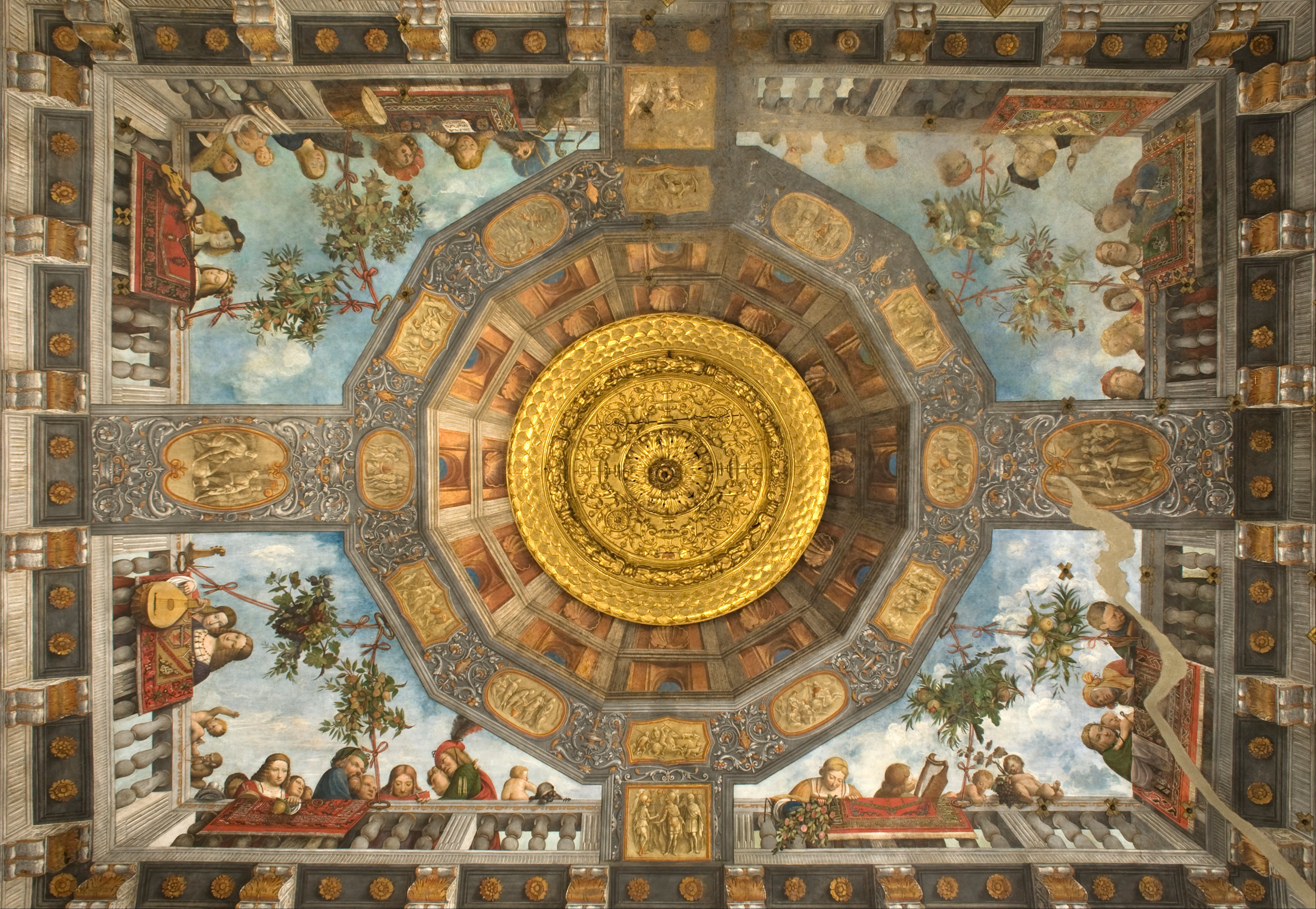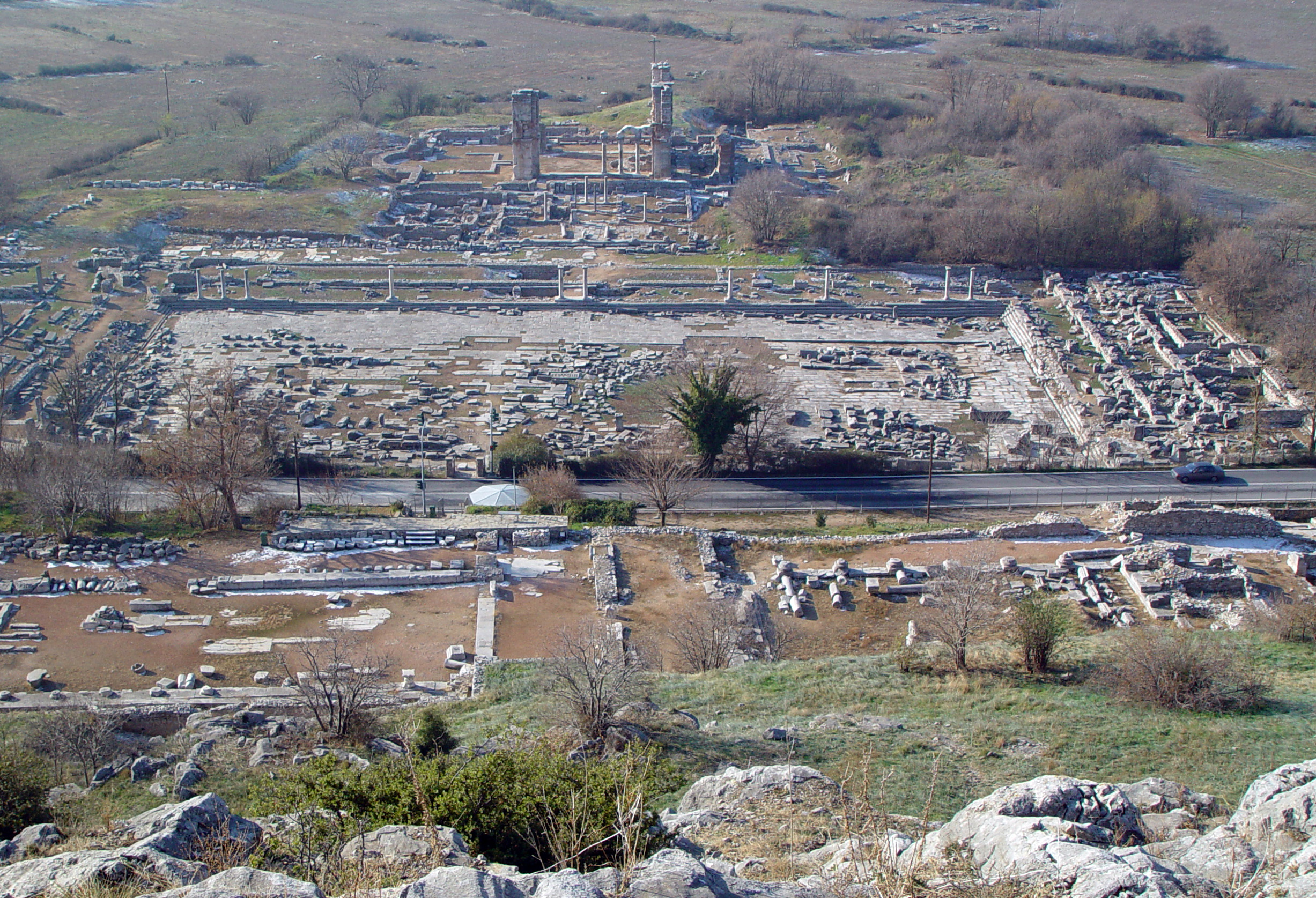|
Triumph Of The Name Of Jesus
''Triumph of the Name of Jesus'' is a 17th-century fresco painting by Giovanni Battista Gaulli. The fresco occupies the nave of the Church of the Gesù in Rome, with both fresco painting and stucco molding. Jesuit history The Jesuit Order, or Society of Jesus, was formed in 1540, by Ignatius of Loyola.Reichold, Graf, and Wynne, Buildings that Changed the World, 102. He was wounded during his time as a Spanish viceroy; which led to his religious enlightenment. While their teachings would spread over many countries, the heart of the society was the Il Gesu, built in the late 1600s. Gian Paolo Oliva was the Father general of the Society of Jesus. Bernini's involvement Giovanni Battista Gaulli owes a great deal of his success on the ceiling fresco to Gian Lorenzo Bernini. Several other artists were considered for the job of painting the ceiling. Gian Paolo Oliva relied on Bernini's opinion when selecting the artist for the ceiling. Bernini is responsible for not only obtaining ... [...More Info...] [...Related Items...] OR: [Wikipedia] [Google] [Baidu] |
Giovanni Battista Gaulli
Giovanni Battista Gaulli (8 May 1639 – 2 April 1709), also known as Baciccio or Baciccia (Genoese nicknames for ''Giovanni Battista''), was an Italian artist working in the High Baroque and early Rococo periods. He is best known for his grand illusionistic vault frescos in the Church of the Gesù in Rome, Italy. His work was influenced by Gian Lorenzo Bernini. Biography Gaulli was born in Genoa, where his parents died from the plague of 1654. He initially apprenticed with Luciano Borzone. In the mid-17th century, Gaulli's Genoa was a cosmopolitan Italian artistic center open to both commercial and artistic enterprises from north European countries, including countries with non-Catholic populations such as England and the Dutch provinces. Painters such as Peter Paul Rubens and Anthony van Dyck stayed in Genoa for a few years. Gaulli's earliest influences would have come from an eclectic mix of these foreign painters and other local artists including Valerio Castello, Giovann ... [...More Info...] [...Related Items...] OR: [Wikipedia] [Google] [Baidu] |
Santa Maria Della Vittoria )
{{disambig, church ...
Santa Maria della Vittoria (''St Mary of the Victory'') is the name of several churches in Italy: *The Basilica of Santa Maria della Vittoria, Rome *Santa Maria della Vittoria, Mantua *Santa Maria della Vittoria, Scurcola Marsicana *Nuragic sanctuary of Santa Vittoria in Serri, Sardinia *Santa Maria della Vittoria, San Vito dei Normanni, Apulia *Santa Maria della Vittoria (Lucera Cathedral Lucera Cathedral ( it, Duomo di Lucera; ''Basilica cattedrale di Santa Maria Assunta di Lucera''; also popularly ''Santa Maria della Vittoria'') is the cathedral of Lucera, Apulia, Italy. The dedication is to the Assumption of the Virgin Mary but ... [...More Info...] [...Related Items...] OR: [Wikipedia] [Google] [Baidu] |
Trompe-l'œil Paintings
''Trompe-l'œil'' ( , ; ) is an artistic term for the highly realistic optical illusion of three-dimensional space and objects on a two-dimensional surface. ''Trompe l'oeil'', which is most often associated with painting, tricks the viewer into perceiving painted objects or spaces as real. Forced perspective is a related illusion in architecture. History in painting The phrase, which can also be spelled without the hyphen and ligature in English as ''trompe l'oeil'', originates with the artist Louis-Léopold Boilly, who used it as the title of a painting he exhibited in the Paris Salon of 1800. Although the term gained currency only in the early 19th century, the illusionistic technique associated with ''trompe-l'œil'' dates much further back. It was (and is) often employed in murals. Instances from Greek and Roman times are known, for instance in Pompeii. A typical ''trompe-l'œil'' mural might depict a window, door, or hallway, intended to suggest a larger room. A version o ... [...More Info...] [...Related Items...] OR: [Wikipedia] [Google] [Baidu] |
Church Frescos In Rome
Church may refer to: Religion * Church (building), a building for Christian religious activities * Church (congregation), a local congregation of a Christian denomination * Church service, a formalized period of Christian communal worship * Christian denomination, a Christian organization with distinct doctrine and practice * Christian Church, either the collective body of all Christian believers, or early Christianity Places United Kingdom * Church (Liverpool ward), a Liverpool City Council ward * Church (Reading ward), a Reading Borough Council ward * Church (Sefton ward), a Metropolitan Borough of Sefton ward * Church, Lancashire, England United States * Church, Iowa, an unincorporated community * Church Lake, a lake in Minnesota Arts, entertainment, and media * ''Church magazine'', a pastoral theology magazine published by the National Pastoral Life Center Fictional entities * Church (''Red vs. Blue''), a fictional character in the video web series ''Red vs. Blue'' * Chu ... [...More Info...] [...Related Items...] OR: [Wikipedia] [Google] [Baidu] |
Gesù Small , a diverse Catholic elementary school
{{disambiguation ...
Gesù or Gesu may refer to: * Church of the Gesù, the mother church of the Society of Jesus **Church of the Gesù (other), other churches with the name * Jesus in the Italian language * Gesù Nuovo, a church and a square in Naples, Italy * Guarneri del Gesù, an Italian luthier from Cremona See also * Gesu School The Diocese of Toledo in America ( la, Dioecesis Toletana in America) is a Latin Church ecclesiastical jurisdiction or diocese of the Catholic Church covering nineteen counties in northwestern Ohio. It is a suffragan see of the metropolitan Arch ... [...More Info...] [...Related Items...] OR: [Wikipedia] [Google] [Baidu] |
Christogram
A Christogram ( la, Monogramma Christi) is a monogram or combination of letters that forms an abbreviation for the name of Jesus Christ, traditionally used as a Christian symbolism, religious symbol within the Christian Church. One of the oldest Christograms is the Chi-Rho (☧). It consists of the superimposed Greek letters Chi (letter), chi and Rho (letter), rho , which are the first two letters of Greek "Christ". It was displayed on the ''labarum'' military standard used by Constantine I in AD 312. The IX monogram () is a similar form, using the initials of the name "Jesus (the) Christ", as is the IH monogram, ΙΗ monogram (), using the first two letters of the name "JESUS" in uppercase. There were a very considerable number of variants of "Christograms" or monograms of Christ in use during the medieval period, with the boundary between specific monograms and mere scribal abbreviations somewhat fluid. The name ''Jesus'', spelt "ΙΗΣΟΥΣ" in Greek capitals, has the ... [...More Info...] [...Related Items...] OR: [Wikipedia] [Google] [Baidu] |
Epistle To The Philippians
The Epistle to the Philippians is a Pauline epistle of the New Testament of the Christian Bible. The epistle is attributed to Paul the Apostle and Timothy is named with him as co-author or co-sender. The letter is addressed to the Christian church in Philippi. Paul, Timothy, Silas (and perhaps Luke) first visited Philippi in Greece ( Macedonia) during Paul's second missionary journey from Antioch, which occurred between approximately 49 and 51 AD. In the account of his visit in the Acts of the Apostles, Paul and Silas are accused of "disturbing the city". There is a general consensus that Philippians consists of authentically Pauline material, and that the epistle is a composite of multiple letter fragments from Paul to the church in Philippi. These letters could have been written from Ephesus in 52–55 AD or Caesarea Maritima in 57–59, but the most likely city of provenance is Rome, around 62 AD, or about 10 years after Paul's first visit to Philippi. Harris, Stephen L., Un ... [...More Info...] [...Related Items...] OR: [Wikipedia] [Google] [Baidu] |
Adoration Of The Name Of Jesus
Adoration is respect, reverence, strong admiration, or love in a certain person, place, or thing. The term comes from the Latin ''adōrātiō'', meaning "to give homage or worship to someone or something". Ancient Rome In classical Rome, adoration was primarily an act of homage or worship, which, among the Romans, was performed by raising the hand to the mouth, kissing it and then waving it in the direction of the adored object. The devotee had his head covered, and after the act turned himself round from left to right. Sometimes he kissed the feet or knees of the images of the gods themselves, and Saturn and Hercules were adored with the head bare. By a natural transition the homage, at first paid to divine beings alone, came to be paid to monarchs. Thus the Greek and Roman emperors were adored by bowing or kneeling, laying hold of the imperial robe, and presently withdrawing the hand and pressing it to the lips, or by putting the royal robe itself to the lips. Ancient Middle E ... [...More Info...] [...Related Items...] OR: [Wikipedia] [Google] [Baidu] |
Cornaro Chapel
The House of Cornaro or Corner are a family in Venice who were patricians in the Republic of Venice and included many Doges and other high officials. The name ''Corner'', originally from the Venetian dialect, was adopted in the eighteenth century. The older standard Italian ''Cornaro'' is no longer common in Italian sources referring to earlier members of the family, but remains so in English. History The family and name Cornaro are said to descend from the gens Cornelia, a patrician family of Ancient Rome. The Cornari were among the twelve tribunal families of the Republic of Venice and provided founding members of the Great Council in 1172. In the 14th century, the family separated into two distinct branches, Cornaro of the Great House and Cornaro Piscopia. The latter name derived from the 1363 grant of the fief of Piscopia in the Kingdom of Cyprus to Federico Cornaro. When Caterina Cornaro married king James II of Cyprus in 1468, the Lusignan royal arms were added to ... [...More Info...] [...Related Items...] OR: [Wikipedia] [Google] [Baidu] |
Rome
, established_title = Founded , established_date = 753 BC , founder = King Romulus (legendary) , image_map = Map of comune of Rome (metropolitan city of Capital Rome, region Lazio, Italy).svg , map_caption = The territory of the ''comune'' (''Roma Capitale'', in red) inside the Metropolitan City of Rome (''Città Metropolitana di Roma'', in yellow). The white spot in the centre is Vatican City. , pushpin_map = Italy#Europe , pushpin_map_caption = Location within Italy##Location within Europe , pushpin_relief = yes , coordinates = , coor_pinpoint = , subdivision_type = Country , subdivision_name = Italy , subdivision_type2 = Region , subdivision_name2 = Lazio , subdivision_type3 = Metropolitan city , subdivision_name3 = Rome Capital , government_footnotes= , government_type = Strong Mayor–Council , leader_title2 = Legislature , leader_name2 = Capitoline Assemb ... [...More Info...] [...Related Items...] OR: [Wikipedia] [Google] [Baidu] |
Ecstasy Of Saint Teresa
The ''Ecstasy of Saint Teresa'' (also known as ''Saint Teresa in Ecstasy'' or the ''Transverberation of Saint Teresa''; it, L'Estasi di Santa Teresa or ) is a sculptural group in white marble set in an elevated aedicule in the Cornaro Chapel of the church of Santa Maria della Vittoria in Rome. It was designed and completed by Gian Lorenzo Bernini, the leading sculptor of his day, who also designed the setting of the Chapel in marble, stucco and paint. It is generally considered to be one of the sculptural masterpieces of the High Roman Baroque. The sculpture depicts Teresa of Ávila, a Spanish Carmelite nun and saint, swooning in a state of religious ecstasy, while an angel holding a spear stands over her. Commission The entire ensemble was overseen and completed by a mature Bernini during the Pamphili papacy of Innocent X. When Innocent acceded to the papal throne, he shunned Bernini's artistic services; the sculptor had been the favourite artist of the previous and profliga ... [...More Info...] [...Related Items...] OR: [Wikipedia] [Google] [Baidu] |



.jpg)
